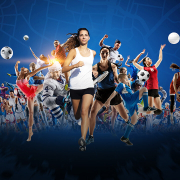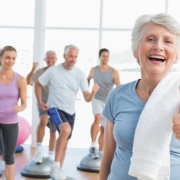Is scoliosis harmed by high-impact sports?
Periodically, ISICO launches the “Concorsetto,” an initiative in the form of a competition in which patients share their experience with wearing a brace, demonstrating that they can do almost anything: horse riding, dancing, rhythmic gymnastics, skating, and much more. This proves that sports and scoliosis are not incompatible.
But what about high-impact sports? Can they make scoliosis worse?
When it comes to scoliosis, one of the most common questions we receive from parents and coaches concerns sports that involve impacts on the spine (shocks, falls, landings from jumps…). Activities such as horse riding, long jump, high jump, and running often raise concerns.
In the common imagination, it is believed that repeated shocks may generate compressive and torsional forces on the spine, worsening the scoliotic curve. In reality, the spine, thanks to its sagittal plane curves, joints, and tendon structures, has a highly efficient system for “absorbing” impacts and withstanding intense forces without negative effects on its three-dimensional structure.
A recent study of ours has shown that the more sports young people engage in, the lower the likelihood of scoliosis worsening and the greater the chances of improvement with physiotherapy treatment [source 1]. It is no coincidence that mild scoliosis is successfully treated with specific exercises aimed at improving posture and triggering corrective reactions in the curves—an effect similar to that of sports, albeit in a less specific and more global manner.
So, is there anything that can actually worsen scoliosis?
According to the available data, an asymmetrical load on the vertebrae promotes uneven spinal growth in individuals already predisposed to developing scoliosis, contributing to its progression in children and adolescents. This is known as Stokes’ vicious cycle.
What should be done, then?
It is essential to counteract these factors using the tools available. Combined with specific treatments such as physiotherapy exercises and/or a brace, sporthelps develop reflexive corrective automatisms, integrating them into daily life. All sports are suitable in these cases, but every case of scoliosis is unique. Since sport reduces the risk of curve progression, it is advisable to encourage young people to choose an activity they enjoy and are motivated to practise consistently.
Even asymmetrical activities, such as tennis, should not be demonised; in fact, they can be a valuable ally in preventing and managing scoliosis. Often, it is enough to combine them with targeted exercises that strengthen the spinal muscle groups under strain.
Sport and the brace: Can physical activity be practised while wearing a brace?
A recent study confirms that those who wear a brace and engage in sport more frequently achieve better results. Moreover, an ISICO study has shown that wearing a brace does not hinder physical activity.
We just remind you that, in case of doubt, it is important to consult your specialist doctor.
In conclusion
Sport should be experienced as a moment of relaxation and recharge. The impacts on the spine that are inevitable when practising sports should not be a cause for concern, as they do not worsen scoliosis. The brace should not excessively restrict the patient’s movement and freedom but should support them in counteracting spinal deformity.
With the guidance of a scoliosis specialist, each patient can find the best way to manage physical activity—whether with or without a brace—because the confidence and psychological well-being derived from engaging in sport are fundamental to the success of the therapy.


